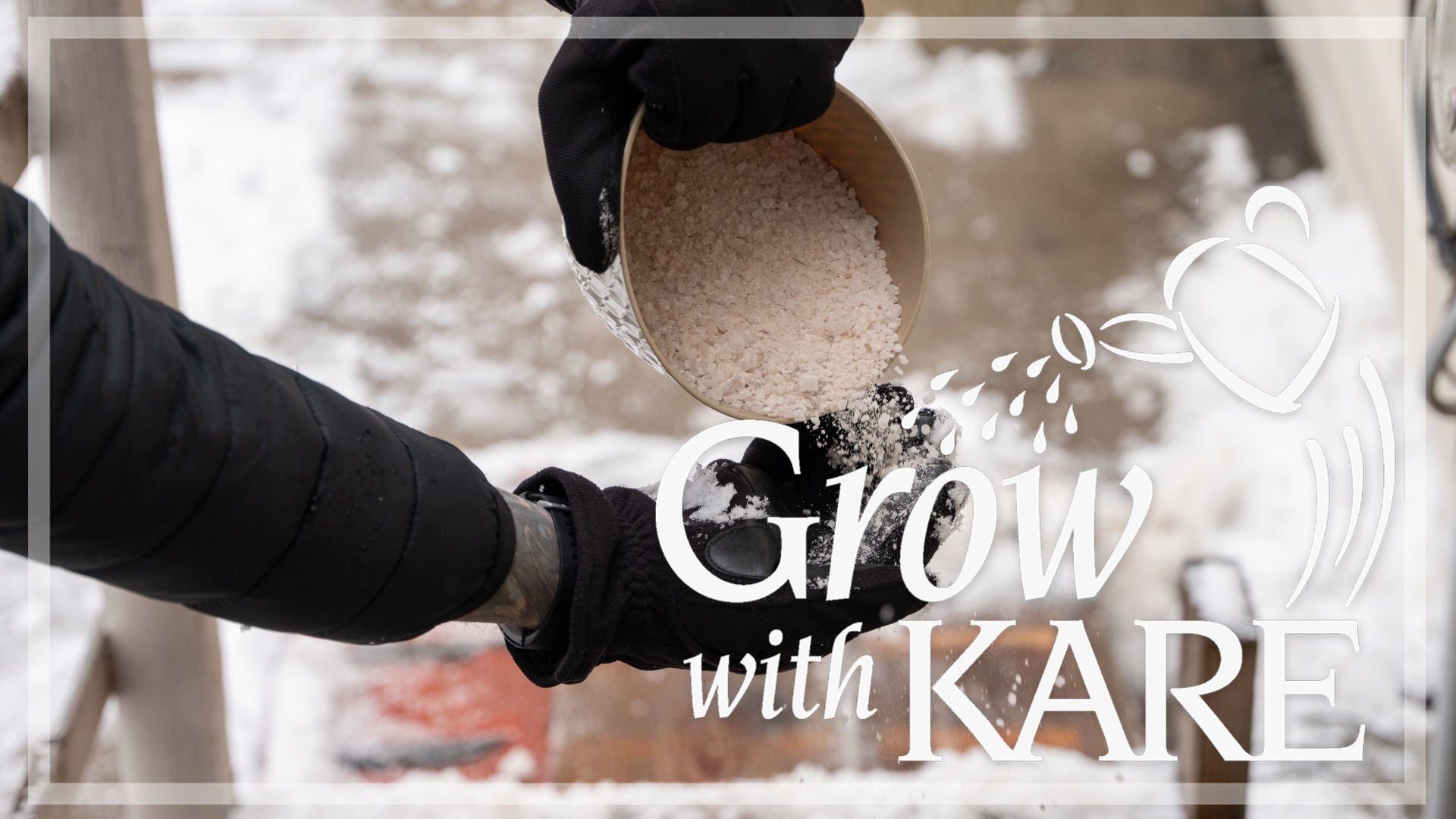GOLDEN VALLEY, Minn. — Sprinkling salt along the sidewalk and driveway does keep the ice away, but it’s not so great for your garden.
In addition to being toxic to aquatic species like frogs and fish, sidewalk salt can burn, dehydrate and even kill your plants.
Sodium chloride is the most commonly used and it does the most damage, and plants along the driveway, sidewalk and the road, of course, are at the highest risk.
Dried or brown needles and leaves are a common sign of salt damage on your plants. Another sign can be loss of foliage, buds and branches. Exposure to salt can even kill the plants altogether. Salt can be absorbed by plant roots, causing dehydration, and salt spray can burn turf and foliage especially on evergreens. Grass is often killed as well.
In addition, salt contributes to soil compaction because the clay particles absorb the sodium and expand.
The first remedy is using less salt, or no salt at all. Timely shoveling is key here.
In areas that will be exposed to salt, avoid planting evergreens. Plant other trees and shrubs at least three feet from sidewalks and driveways, and at least seven feet from roadways. Grass mixes with fine fescues are more salt tolerant than other varieties.
Some perennials are more salt-tolerant than others. Hostas are one that can stand the sodium. So can this list below of other tough and tolerant perennials, shrubs and trees to plant in salt-prone areas.
- Yarrow
- Milkweeds, all varieties
- Aster
- Purple Coneflower
- Daylily
- Hosta
- Bearded Iris
- Asiatic and Oriental lilies
- Bee balm
- Daffodil
- Catmint or Catnip
- Peony
- Russian sage
- Ribbon grass
- Garden phlox
- Gloriosa daisy
- Stonecrop or Sedum
- Lamb's ear
- Speedwell
- Yucca
Watch more of Grow with KARE:
Watch the latest gardening tips and tricks in our YouTube playlist and don't forget to join the Grow with KARE Facebook group:

